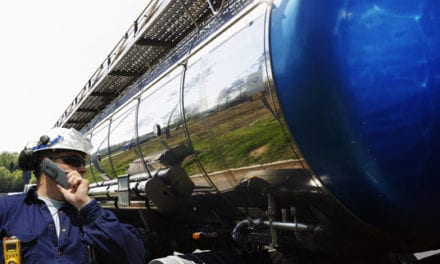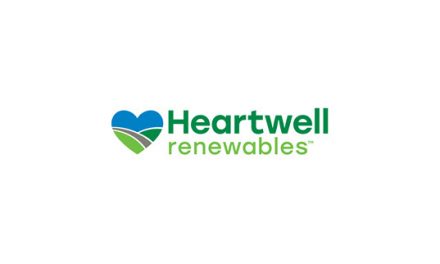Refining Use Continues Near Capacity
In this week’s report:
- Libyan exports advance despite conflict in Tripoli
- Economic statistics confirm improving economy
- The US is approaching Saudi Arabia and Russia’s top producing level.
- Additions to natural gas stocks will have to average 122 Bcf weekly to match the average five-year average peak injection.
Sincerely,
Alan Levine
Chairman, Powerhouse
The Matrix
The geopolitical situation has hardly clarified. Reports of heavy fighting in Tripoli do not appear to have interfered with renewed export activity. According to press reports, Libyan oil output has risen to 600,000 barrels daily and exports are continuing from Es Sider terminal.
The weather forecasters are dipping their toes into the early winter projection contest. The Farmers’ Almanac, in publication for 198 years, correctly predicted last winter’s polar vortex and cold. The Almanac projects “colder-than-normal and wetter-than-usual weather for three-quarters of the country east of the Rocky Mountains. Drought-stricken California, along with the Pacific Northwest, will see normal precipitation and cool temperatures this winter.”
Economic statistics confirm improving conditions in the United States. “Orders for U.S. durable goods jumped in July by the most on record, while consumer confidence reached the highest level in almost seven years. The Conference Board’s sentiment gauge rose to 92.4, the highest since October 2007, from a revised 90.3 a month earlier,” according to press reports.
Supply/Demand Balances
Supply/demand data in the United States for the week ending August 22, 2014 were released by the Energy Information Administration.
Total commercial stocks of petroleum rose, adding 1.4 million net barrels last week. Crude oil declines accounted for 2.1 million barrels. Distillate fuel oil stocks increased 1.3 million barrels. Reductions were seen in gasoline and fuel ethanol. Total supplies of crude oil and products stand at 1.123 billion barrels of oil. Current supply of all oils has moved ahead of last year by 3.5 million barrels.
Commercial crude oil stocks were 360.5 million barrels during the report week. The draw continues the reduction of supplies that began in early May when crude oil stocks were at 397.6 million barrels. Stocks are now 1.6 million barrels lower than last year at this time. The failure to build stocks reflects the high intensity of refinery demand for crude oil, now a feature of the market.
Virtually the entire decline occurred on the Gulf Coast where stocks fell 2.1 million barrels. Stocks at Cushing, OK were up 0.5 million barrels, moving to 20.7 million barrels. The reductions that had drained stocks from Cushing earlier this year bottomed late in July at 17.9 million barrels.
Crude oil imports rose 174,000 barrels daily during the report week, averaging 7.6 million barrels daily. Imports are down 5.1 per cent from the same four-week period last year.
U.S. crude oil production held 8.6 million barrels a day according to the latest report. The New York Times reported, “The United States now accounts for 10 percent of the world’s oil production. As it sharply curtails imports from countries like Angola and Nigeria, those producers are then compelled to sell their oil to China and other Asian markets at steep discounts, compounding the impact of American production on world markets.”
Refinery utilization rates were 93.5 percent. Utilization rose only 0.1 percentage points nationally, but Midwest facilities operated at 95.3 per cent of capacity.
Crude oil inputs to refineries rose to 16.5 million barrels per day during the report week. Gulf Coast facilities ran 8.7 million barrels of crude oil daily at that time. This continues the record level of crude oil use noted last week.
Gasoline production increased to 9.5 million barrels per day. This was consistent with a gain in demand to 9.1 million barrels per day. The four-week average remains just over 9 million barrels per day.
There was a small loss in gasoline stocks of 1.0 million barrels to 212.3 million barrels. Declines of one million barrels each were seen on the East Coast and in the Midwest. An increase of one million barrels occurred on the Gulf Coast.
Distillate fuel oil supplies built 1.3 million barrels during the report week. The gains were seen largely centered on the Gulf Coast (+2.8 million barrels.) Supplies in the U.S. remain well below last year’s levels. Distillate stocks now lag last year’s level by 6.2 million barrels.
Distillate fuel oil demand fell to 3.6 million barrels daily. Refinery production of distillate fuels remained at 4.9 million barrels daily.
Propane inventories added another 1.9 million barrels in the U.S. Total stocks are 74.7 million barrels, 12.6 million barrels more than last year at this time. Gulf Coast stocks are 41.0 million barrels, up 0.1 million barrels for the week. Midwest stocks were up 0.6 million barrels. Inventories there are now 25.1 million barrels.
Natural Gas
According to the EIA: The net injection reported for the week ending August 22 was 75 Bcf, 17 Bcf larger than the five-year average net injection of 58 Bcf and 10 Bcf larger than last year’s net injection of 65 Bcf. Working gas inventories totaled 2,630 Bcf, 490 Bcf (15.7%) less than last year at this time and 518 Bcf (16.5%) below the five-year (2009-13) average.
Additions to storage for the total injection period starting during the week ending April 4 have reached 1.808 Tcf. This continues the pattern of much larger than average injections for these weeks. Nonetheless, working natural gas in underground storage remains below the lowest level of the past five years at this point in the injection season. For the past five years, comparable injections averaged 1.3 Tcf. There are ten weeks left in the traditional injection period. Additions to stocks will have to average 122 Bcf weekly to match the five-year average peak injection.
After last winter’s weather-induced rally to $6.49, prices fell into a broad chop. Prices ranged between $4.26 and $4.85 in the second quarter. Values fell to $3.74 in July but have since recovered. Prices have broken resistance, now trading just above $4.00. Seasonal factors argue for a further advance but the market may be technically overbought and could retreat before testing next resistance at $4.12.
Futures trading involves significant risk and is not suitable for everyone. Transactions in securities futures, commodity and index futures and options on future markets carry a high degree of risk. The amount of initial margin is small relative to the value of the futures contract, meaning that transactions are heavily “leveraged”. A relatively small market movement will have a proportionately larger impact on the funds you have deposited or will have to deposit: this may work against you as well as for you. You may sustain a total loss of initial margin funds and any additional funds deposited with the clearing firm to maintain your position. If the market moves against your position or margin levels are increased, you may be called upon to pay substantial additional funds on short notice to maintain your position. If you fail to comply with a request for additional funds within the time prescribed, your position may be liquidated at a loss and you will be liable for any resulting deficit. Past performance may not be indicative of future results. This is not an offer to invest in any investment program.Vol. PH 03 NO. 35
Was this memo helpful? We’d like your feedback.Please respond to [email protected]
Copyright © 2014 Powerhouse, All rights reserved.













